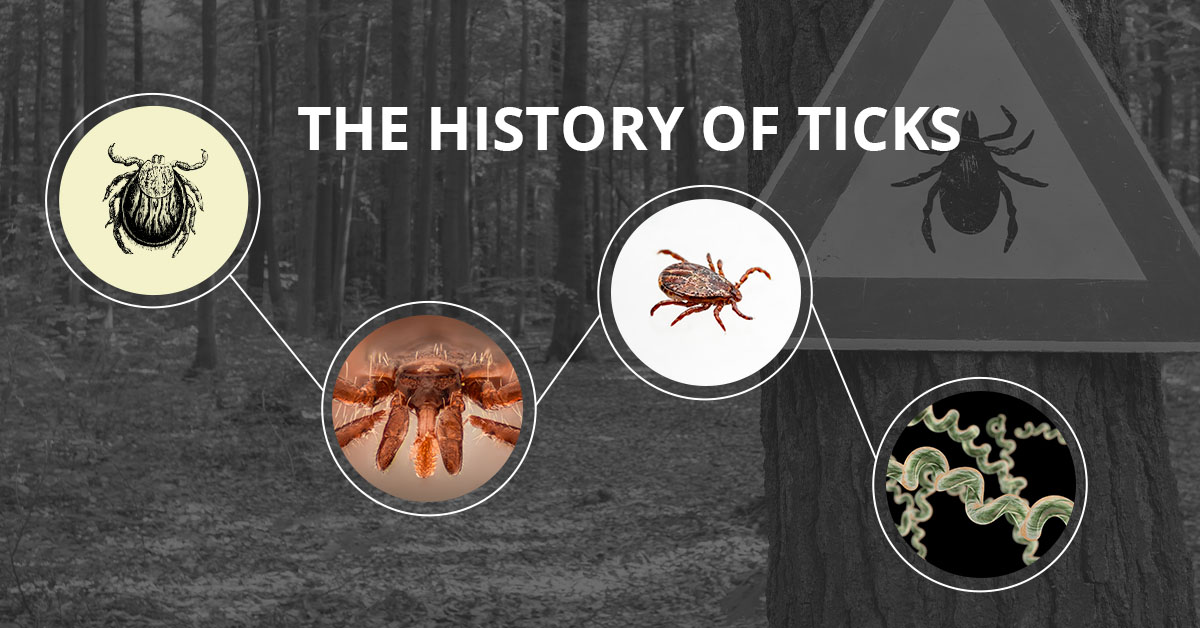Ticks are a kind of parasitic mite that lives off the blood of animals. They will attach to and feed on mammals, birds, reptiles, and amphibians. Ticks have eight legs, just like spiders, and are classified as arachnids. Adult ticks are generally between 3 and 5mm long, depending on the species. They come in soft and hard varieties, depending on the hardness of their body covering. Nearly 900 species of ticks are known to exist worldwide.
Ticks expand when they feed, increasing their body weight by up to 600 times. They extract blood by nibbling a hole in the host’s skin and inserting a small sharp, straw-like structure directly into the host. To help in feeding, they excrete a chemical that keeps the blood from clotting.
Did Dinosaurs Have Ticks?
How long have ticks been around? To answer the question, we must go to the fossil record. While the precise origin of ticks is unknown, according to ABC News, the oldest preserved tick was discovered in 2006 encased in amber. It dates to near 90 million years old (from the Cretaceous Period). Evidence shows that prehistoric ticks fed from “feathered dinosaurs, non-avialan or avialan excluding crown-group birds.” So yes, dinosaurs had ticks.
Are Ticks All Over the World?
Ticks are seen almost everywhere on earth. They do have particular preferences about where they live, including –
- They thrive in warmer, wetter climates since low temperatures stunt the growth of their eggs.
- They prefer areas of transition between woodlands and fields or open spaces.
- They like plenty of leaves, low-lying vegetation, and moist, warm places where brush and weeds grow wild.
How Dangerous Are Ticks?
Unfortunately, ticks are very harmful to both animals and humans. According to National Institute of Health experts, “Tick-borne pathogens are believed to be responsible for more than 100,000 cases of illness in humans throughout the world. Ticks are considered to be second worldwide to mosquitoes as vectors of human diseases, but they are the most important vectors of disease-causing pathogens in domestic and wild animals.”
Ticks can spread several diseases to humans, including Rocky Mountain spotted fever, Colorado tick fever, Crimean-Congo hemorrhagic fever, and Lyme disease.
When Was Lyme Disease First Discovered?
As mentioned earlier, ticks have been around for close to 100 million years. While the bacteria that causes Lyme disease (Borrelia burgdorferi) was only officially named in 1981, a 5,300-year-old mummy was recently found to contain the bacteria.
Those infected with Lyme disease may experience a rash, joint pain and weakness, muscle aches, fatigue, fever, joint stiffness or swelling, and headache. While treatable, early detection can help avoid more severe heart or nervous system problems. A doctor can run a simple test to determine if the bacteria is present and prescribe medication as treatment.
How Do I Prevent Ticks?
As previously discussed, ticks love humid places with low vegetation to lay their eggs. One way to help manage ticks is to remove leaves, brush, and weeds at the edge of your property. Regular warm-weather tick spraying and preventative winter treatments can provide year-round tick prevention.
Trust Your Property with East End Tick & Mosquito Control®
East End Tick & Mosquito Control® is Eastern Suffolk County’s most-experienced tick extermination company. Since 1997, we have provided Suffolk County’s Twin Forks and East End with the most effective prevention and extermination methods. Protect yourself and your family from disease-carrying ticks by requesting a free estimate now or you can call our Southampton office at (631) 287-9700, our East Hampton office at (631) 324-9700, or our Southold office at (631) 765-9700.


